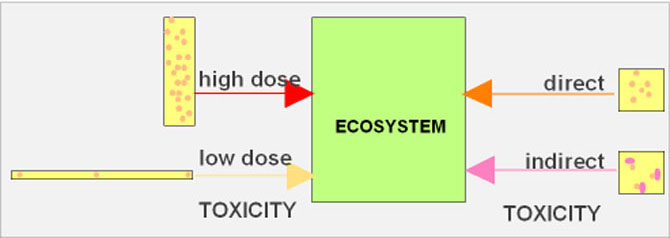Is laboratory experimentation realistic?

Methodology principles.
The properties of nanoparticles which can evolve according to experimental conditions, and the effects observed in laboratory on certain organisms could be different from real effects in a natural environment.
For a large majority, the ecotoxicity studies have been realized with a model specie (algae, bacteria,…) exposed to a nanomaterial in a single medium (water, ground or sediments) on short periods (not exceeding 3 weeks). It is thus possible to assess the toxicity and the toxic mechanisms of the effects of nanomaterials concerning a specie. But, this kind of studies doesn’t allow to evaluate the impacts of single or mixing nanomaterials and of their residue at the ecosystem level as a whole.


